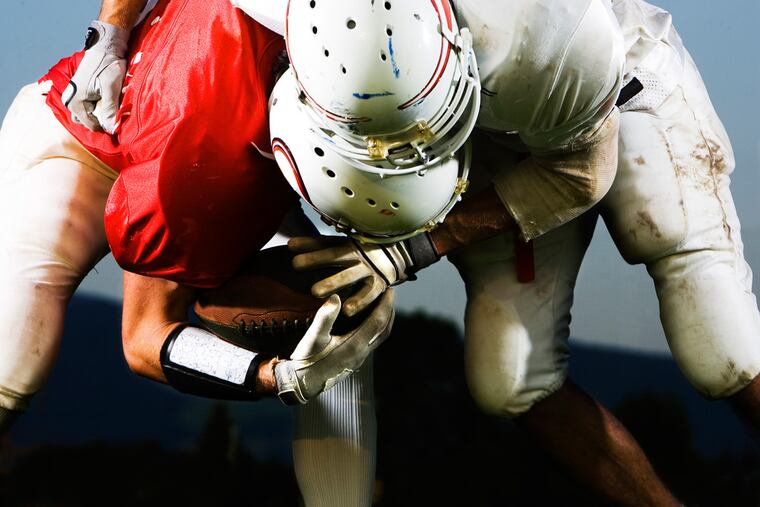Treatment for kids with concussion continues to evolve, new report finds
The American Academy of Pediatrics released an updated report on treating sports-related concussions this week.

How to care for young people with sport-related concussions continues to vex pediatricians and those who treat, coach, and teach them. An estimated 1.1 million to 1.9 million U.S. children and teens are treated for recreational or sport-related concussions every year, and yet the true number of youth concussions likely remains underreported, according to the American Academy of Pediatrics in an updated report released yesterday.
Although reported concussions have grown four times in the last 20 years, clinicians believe that underreporting occurs because of youngsters who do not want to miss school, work, or sports. Unless there is an observed loss of consciousness, we only know about these problems because the child tells someone.
The latest recommendations take into account the evolution of guidance on treatment and recovery of injured players over the past few years. It calls for reducing—but not eliminating—a return to some physical and cognitive activity in the days following a concussion.
Research shows that sport-related concussion remains common in nearly all sports at all levels, with boys' tackle football and girls' soccer reporting the most incidents, followed by other high-contact sports. Concussions are much more likely to happen in games than in practice.
New data also found that recovery from concussion varies greatly from one individual to the next so that the same exact treatment does not work for everyone, but that the general principles of injury and recovery stay the same.
Understanding the basics
Sports-related concussions or SRCs do not have universal definitions, but essentially it is a traumatic brain injury from the effect of force on the head with one or more of these symptoms:
Confusion, disorientation and/or loss of consciousness immediately after the injury
Impaired balance within 24 hours of the event
Slower reaction times within two days of the injury
And/or impaired verbal learning and memory within two days of the event
Other common symptoms range widely from headaches, sensitivity to light or sound, dizziness, confusion, personality change and fatigue, but there are many more. Pre-existing conditions such as migraines, attention problems, and depression can become much worse. Girls report worse symptoms than boys.
Symptoms that require going to the emergency department include, unconsciousness, weakness or tingling in the arms and legs, progressively serious headache, repeated vomiting, combativeness and seizures.
The AAP report discourages grading the degree of injury such as mild, moderate, severe or simple versus complex since these labels do not correlate with ease of recovery and give a false impression to the patient and family.
Metabolically after these injuries, the brain attempts to restore the pre-existing stable brain energy use and the overwhelming energy demands of the injured neurons results in inadequate energy supply to think normally for up to four weeks or more. The suggested decrease in use of the brain even to watch TV or listen to music after a concussion is an attempt to decrease brain energy need.
Treatment
After a suspected head injury, the player must be removed from play immediately and not go back in to play later that day. A SRC child should be removed from physically and mentally strenuous activity, but excessive lack of thinking or moving can make the injury linger. Once the child returns to school, often an initial diminished workload is a suggested with a gradual return to normal levels.
Electronics are thought to be not harmful after concussions, but minimize them if they make the head hurt worse. Driving is not recommended initially because reflexes are slower after these injuries.
Return to sports participation should not be until symptoms are minimal and the child has already returned to full academics.
What else should I know?
Each concussion is unique with different symptoms and can worsen pre-existing conditions. Kids get recover on different timelines, but most should be better in four weeks or less. Initially, reduce intellectual and physical activity, and go back to normal activity as soon as possible without worsening the symptoms. Medications do not help recovery from concussions.
We do not know whether one concussion will have lasting consequences, but we do know that multiple concussions are bad for the child's brain although less of a problem than repeated concussions as an adult.
Everyone wants a child with a concussion to get head imaging, but very severe SRCs can have normal MRIs or CTs initially. MRI is a more revealing test in concussion if needed.
Sometimes a victim of concussion must retire from contact sports to get better. Consultation with a concussion specialist is advised if this option comes up.